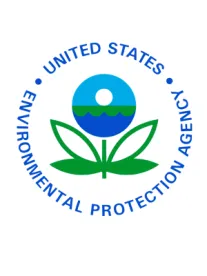On Aug. 17, 2023, the U.S. Environmental Protection Agency (EPA) announced its final, revised National Enforcement and Compliance Initiatives (NECIs) for fiscal years 2024-2027, seven months after soliciting public comment on its proposals. The six final NECIs include three new subject areas (climate change, PFAS, and coal ash), retain three existing NECIs (air toxics, drinking water, and chemical accident risk), and “demote” three existing NECIs (tamper and defeat devices, RCRA air, and NPDES significant noncompliance) to “core” enforcement (meaning that the agency determined those initiatives no longer require the focus reserved for NECIs).
NECIs are the means by which the EPA identifies areas where the agency “focus[es] resources on serious and widespread environmental problems where federal enforcement can make a difference.” See Public Comment on EPA’s National Enforcement and Compliance Initiatives for Fiscal Years 2024–2027, 88 Fed. Reg. 2093, 2094 (Jan. 12, 2023). Each NECI lasts four fiscal years, after which time ongoing prioritization is reevaluated.
Facility owners and operators are well-advised to determine whether their industries or locations fall within the scope of the six new NECIs. Review of the EPA’s EJScreen tool, an online mapping tool that allows citizens to review various demographic, pollutant, and health data by address, may help owners and operators understand their enforcement risk and provide focus for any internal compliance system reviews.
Three new NECIs. These include: (1) mitigating climate change, (2) addressing PFAS contamination, and (3) protecting communities from carcinogenic coal ash contamination. See David M. Uhlmann, Memorandum: FY 2024 – 2027 National Enforcement and Compliance Initiatives (Aug. 17, 2023).
(1) Mitigating Climate Change. This NECI will focus on methane and hydrofluorocarbon enforcement. Methane and hydrofluorocarbons are potent greenhouse gases, with global warming potentials tens to thousands of times greater than carbon dioxide’s.
(2) PFAS Contamination. Under this NECI, the EPA aims to identify and characterize the extent of PFAS contamination near PFAS manufacturing/use facilities in the country; to control ongoing releases that pose a threat to human health and the environment; and to ensure compliance with permits and other agreements (including at federal facilities, which may have used PFAS in firefighting and training). The EPA noted that its efforts will focus on protecting drinking water supplies and that it anticipates enforcement actions under this NECI to begin in FY 2025.
(3) Coal Ash. Noting that coal often contains carcinogenic constituents, the EPA plans to focus its inspections, investigations, and enforcement on coal ash facilities located in or near vulnerable or overburdened and where necessary to protect and clean up contaminated groundwater, surface water, and drinking water resources.
Three retained NECIs. These include: (4) reducing air toxics in overburdened communities, (5) reducing significant non-compliance with drinking water standards at community water systems, and (6) reducing risk of accidental releases at industrial and chemical facilities. Importantly, EPA stated that “[a]ll of the initiatives incorporate environmental justice considerations[.]” Id.
(4) Air Toxics. Under the new version of this NECI, the EPA will focus its investigations and enforcement on addressing hazardous air pollutant (HAP) violations in communities already highly burdened with pollution impacts. Where noncompliance is found and enforcement is appropriate, regions will engage with community groups on appropriate relief to address the community’s concerns.
(5) Drinking Water. Continuing its pursuit of improving Safe Drinking Water Act compliance, the EPA will ramp up field presence, pursue strategic enforcement to reduce noncompliance, and offer more compliance assistance to prevent and address public health risks.
(6) Chemical Accident Risk. Finding that many facilities continue to inadequately manage the risks they pose or fail to ensure the safety of their facilities to protect workers, first responders, and surrounding communities, the EPA will continue its focus on chemical accident risk prevention under Section 112(r) of the Clean Air Act. The EPA plans to focus on two extremely hazardous substances that pose high risk to communities: anhydrous ammonia (mainly used as a fertilizer or a refrigerant) and hydrogen fluoride (used in petrochemical manufacturing).
Return to core enforcement. Of the three NECIs returned to core enforcement, industry watchers were perhaps most surprised to learn that the EPA had decided to demote its tamper and defeat device NECI. (“Tamper and defeat device” is the term the EPA uses for items and software designed to thwart vehicle emissions controls.) While the agency had resolved approximately 130 tamper and device cases under the now-demoted NECI, recent news stories about automakers’ fuel and efficiency claims had suggested to some that the initiative might be continued.
Regardless of a program’s inclusion in or demotion from an NECI, the EPA maintains authority to take enforcement, as appropriate, to address non-compliance or imminent and substantial endangerment.




 />i
/>i

